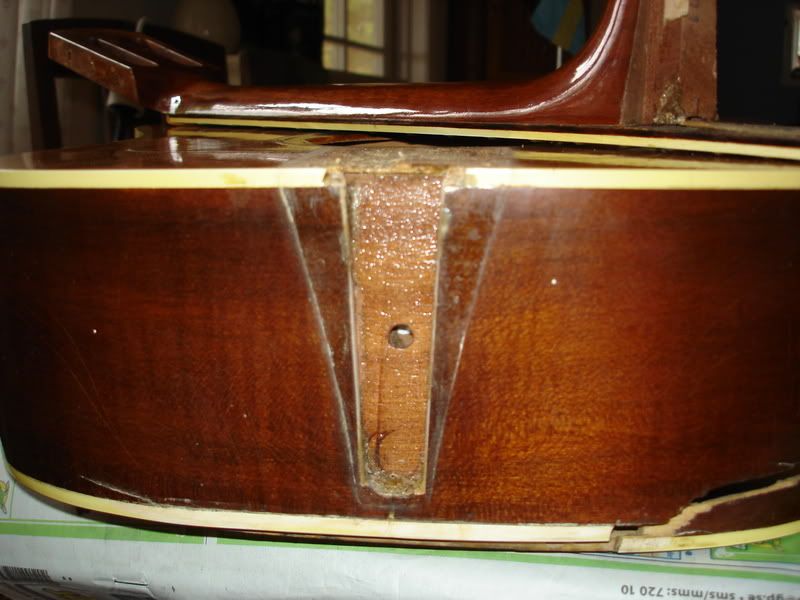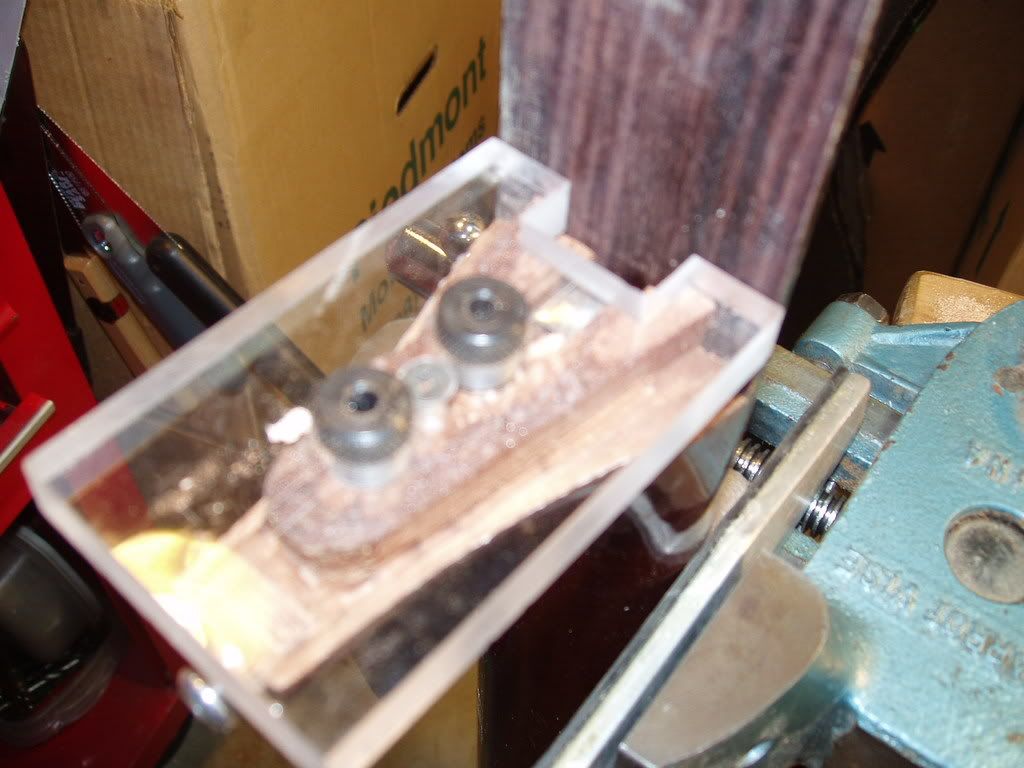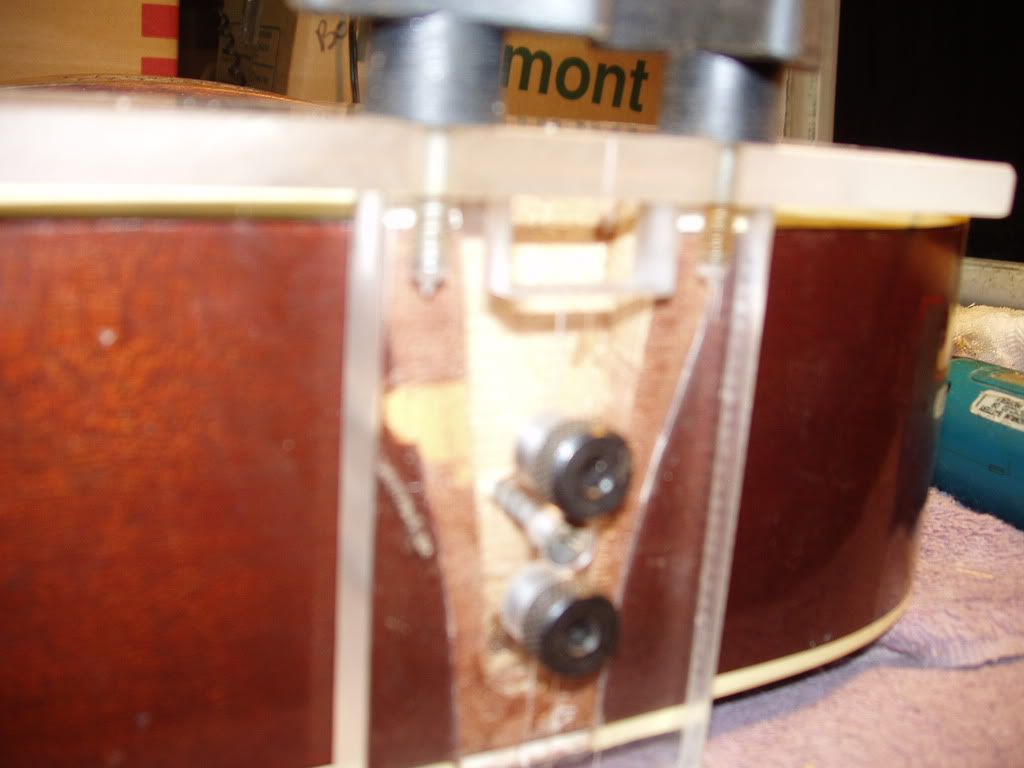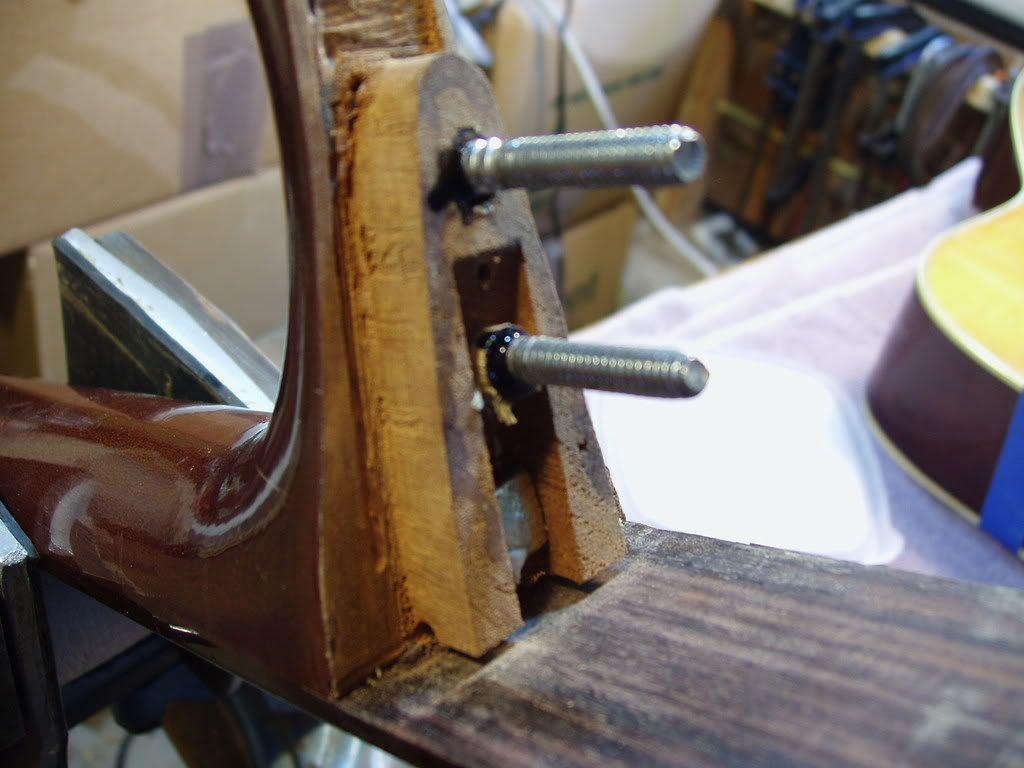Hello all,
I'm the luthier for Maple Street Guitars in Atlanta and have been stealing Frank's web info for years. ( I think it's time to make a donation.) Anyway, I recently got into a 1965 Guild M20 for a neck reset. I've done lots of neck resets on Guilds and other guitars, so I figured it was another dovetail joint. Wrong!
Turned out to be a motise/tenon joint that I have been unable to remove via steam and neck removal jig. I tried accessing the joint from the top ( I took a chance and removed the fretboard tongue to find the joint, which is how I know what it is) and through the heelcap. All to no avail. Suggestion? Advice?
I'm the luthier for Maple Street Guitars in Atlanta and have been stealing Frank's web info for years. ( I think it's time to make a donation.) Anyway, I recently got into a 1965 Guild M20 for a neck reset. I've done lots of neck resets on Guilds and other guitars, so I figured it was another dovetail joint. Wrong!
Turned out to be a motise/tenon joint that I have been unable to remove via steam and neck removal jig. I tried accessing the joint from the top ( I took a chance and removed the fretboard tongue to find the joint, which is how I know what it is) and through the heelcap. All to no avail. Suggestion? Advice?
Views: 1269
Replies to This Discussion
-
Oh yeah, My name is Jeff Henry. No need to be too stealthy in the repair department
-
Jeff,
I have never done a Guild, but have You checked the sides of the neck block inside, for possible "locking pins"?
Some builders put two wooden pins sideways through the complete joint, one from each side. I don´t know if Guild ever did this, but if so, they have to come out.
-
No pins, but thanks for the advice. May have to get creative with this repair.
-
I must say I'm surprised, too. I'd have expected a dovetail there.
-
is there a heel cap you can remove and drill a hole to get steam in from the bottom?
I have done that on a few Guild twelve strings and the neck comes off as quick as a martin
-
On most Levin guitars with dovetail joint there is a 5 mm hole from inside the guitar through the neck block, which seems very convienient to load steam through. I imagin it would be possible with a long enough drill to make a hole like that to get the steam to the centre of the joint. Or work with a dremel from inside the guitar...?

-
I've been drilling a 3/16" hole into the neckblock for steam for a while now. I use a long piece of brass ground to a point, for a punch, and drill w/ an aircraft bit. I only reset by converting to bolt-on, so I don't get any trophy vintage guitars to reset, which is fine by me. I use this template for both the hanger bolts in the heel tenon, and the through holed in the neckblock--there's a right angle piece of lexan screwed into the template, to index it to the top of the guitar; that piece is removed for the heel drilling. I step drill the 3/16" holes in the heel to 7/32"/15/64" depending, for a 1/4-20 hangerbolt, and usually open the ones in the neckbock to 5/16".
-
Hi Jeff-- is the neck a bolt on item like some makers have ????
If so can you see the neck block from the "sound opening"
be it "F" hole or "O" hole where the bolts are put into the tennon?
More thought to come :)
Donald
-
Jeff,
I see that you said there are no "pins" in the joint but maybe there are wood dowels ?? You wouldnt be able to see them, even with the fingerboard extension removed. I've had success loosening the glue with a heat lamp, carefully applied and focused on the neck joint while wiggling the neck and pulling up, along the centerline of the guitar. Also, maybe they glued the neck heel to the top surface... if so, I doubt steam would get up there. Heat might. Just a thought.
Mike
-
Thanks for all the feedback fellers.
I think I may give the heat lamp a go and see what happens. I also need to check again to make sure there aren't wood dowels in the joint. I'll let you know what happens. Stay tuned.
Jeff
-
Jeff,
If you havent tried the heat lamp yet, here's a photo of what worked for me, using foil-backed 1" insulation board to protect the sides and back of a Japanese-made Aria 12 string, glued on with 4 wood dowels.
Mike - Attachments:
© 2025 Created by Frank Ford.
Powered by
![]()


